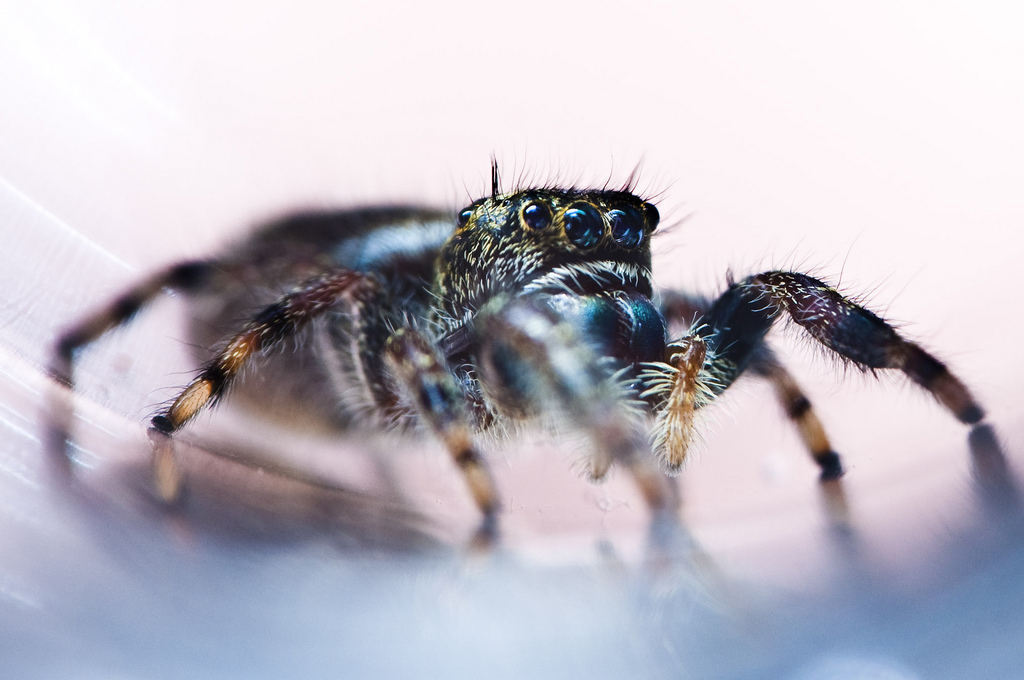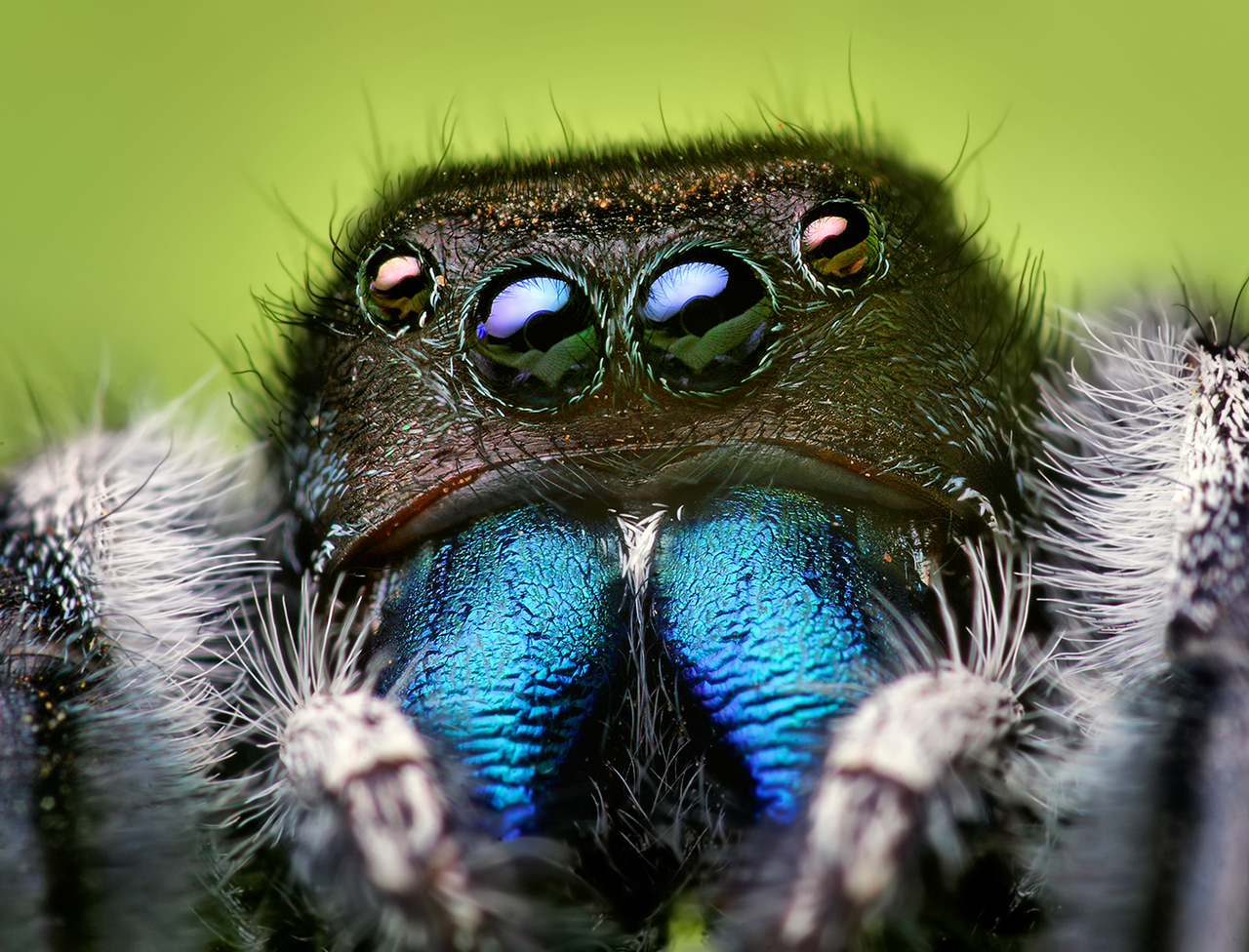Can I dance for you?
If you’re having trouble finding a date, maybe you should take
some tips from the salticidae family of spiders. The males in
this family do what is called courtship to try and persuade a
female to mate with them. Courtship is basically a show-off what
you have presentation. The color, vision, and silk the spiders
obtain are all used in this extreme “flirtation” display.
Salticids are usually quite colorful, males especially due to
their part in courtship. In courtship, the males can be seen
standing up on their back legs to show the color of their
abdomen, or to move side to side and jump at the end to show off
their body, and leg color. Also, some males will advance towards
the female in a zigzag pattern while tilting their abdomen, as
well as opening and closing their chelicerae (or fangs) that are
usually bright metallic colored (Elias 2003). With the acute vision
that this family of spiders has, the color of the spider and the movements that they do are actually quite powerful.
and the movements that they do are actually quite powerful.
Vision and color are not the only things used in courtship.
Vibratory signals on silk, which are patterns of change in
tension and movement of the web, and noises are also used. It is
quite interesting that a non-web building spider has the ability
to perceive vibratory signals on silk, but they can. If a female
is in her nest the male will perform vibratory courtship on the
nest and if successful, the male will enter to mate with the
female. The male does not have to be able to see to do this type
of courtship. This is good because most nests are usually built
in dark areas such as, under rocks, leaves, or in cracks. If a
male encounters a female outside of her nest, the male will
attempt the color type courtship, mentioned above, as well as
combine that with noises.
Here
is a video of a salticid’s display of courtship.
Studies have shown that the evolution of these spiders’
courtship has been shaped by forcing males to overcome the
resistance of females by performing more complicated dances and
being more extravagantly decorated. There are many more
combinations of displays that the male is capable of. These are
only a few.
Following courtship and mating the female has her eggs and
contains them in a silken sac. These silken egg sacs are
spherical in shape. The sacs are then embedded in a cocoon-like
nest. The salticid stays with these but the reason for this is
unclear (Harland 2000).
Here is how Phidippus audax interacts with other organisms.
